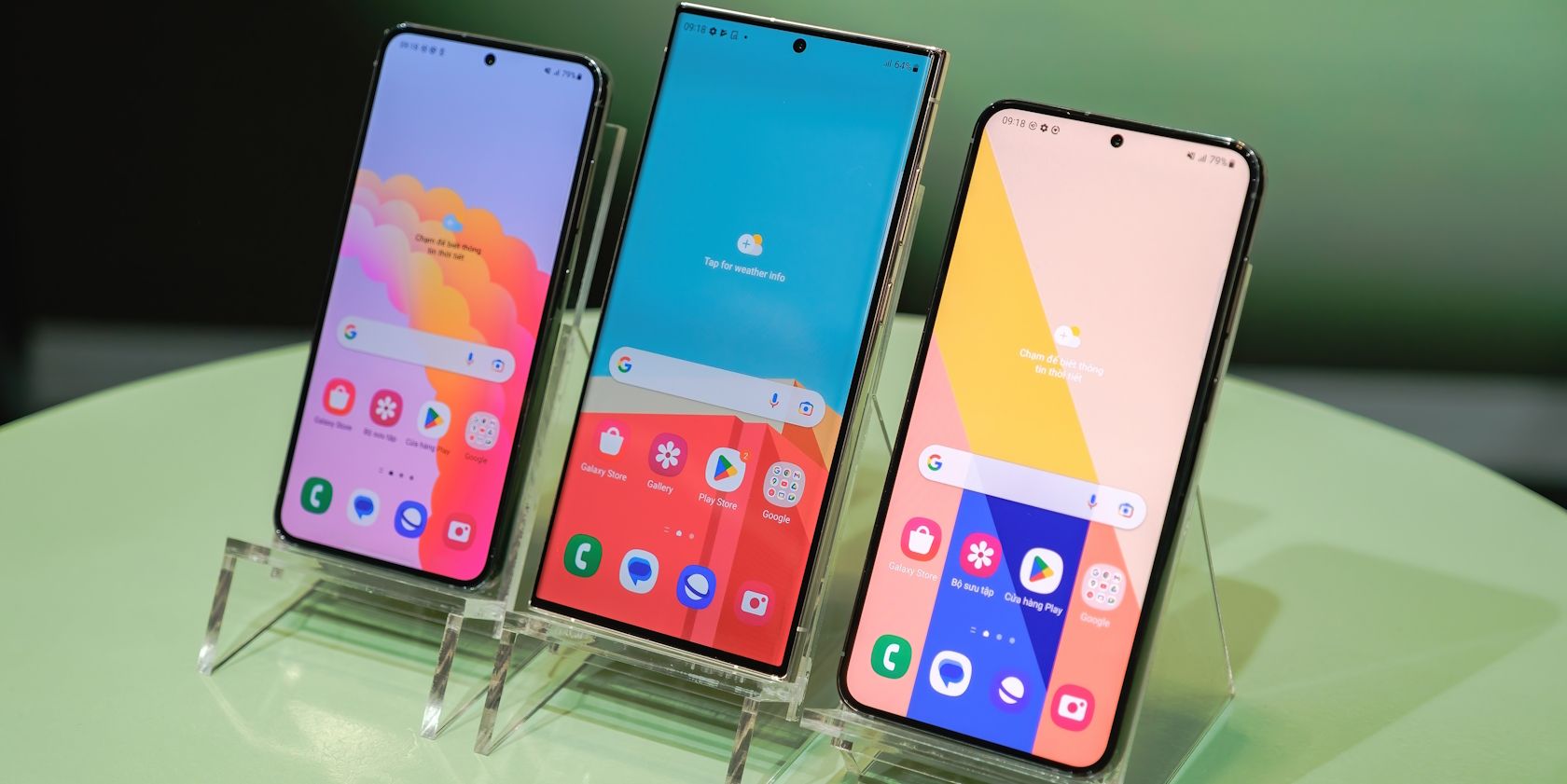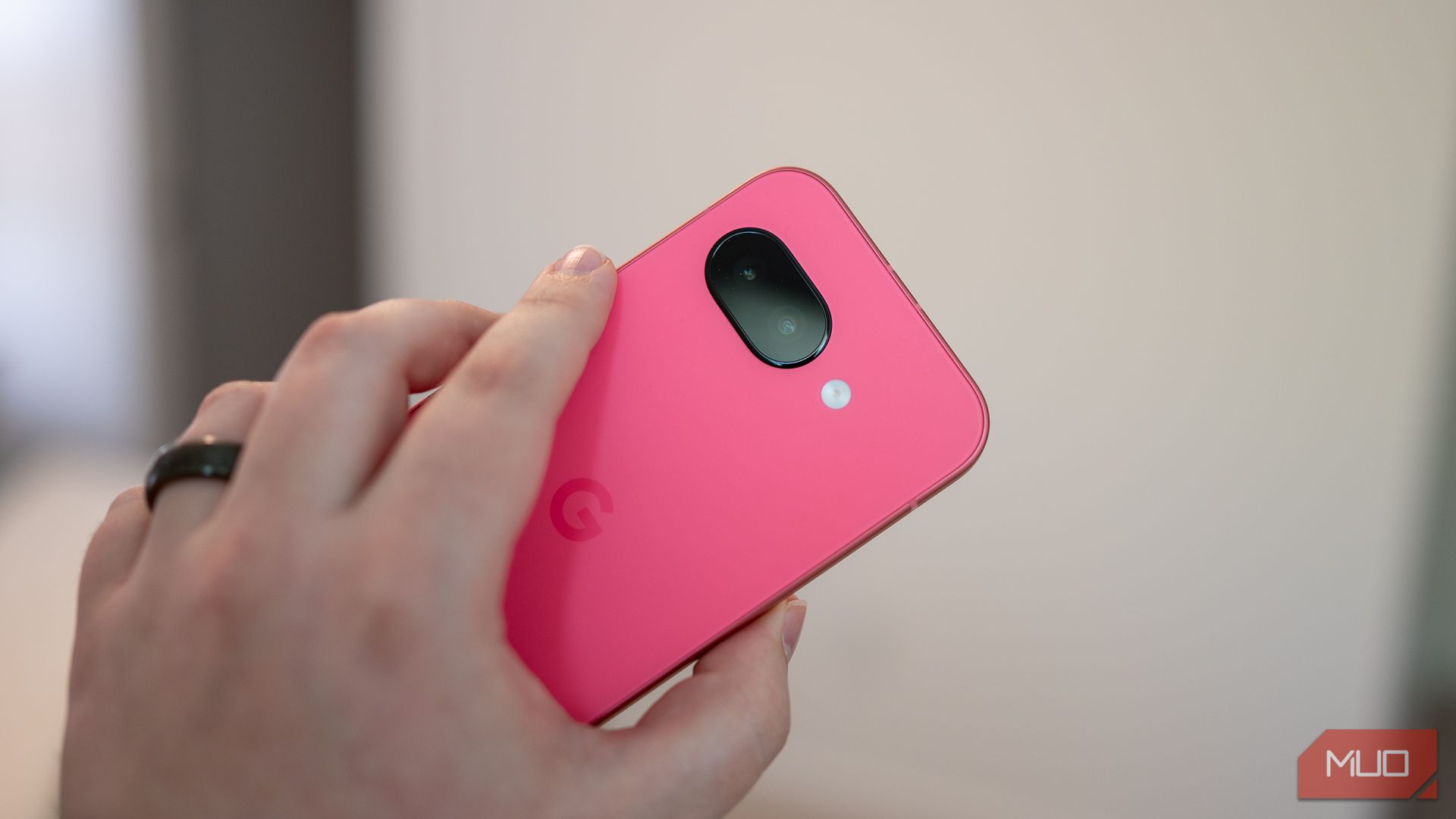Five years ago, I took a leap and got my first Pixel phone, not knowing if it was worth its price tag. After using three Pixels in a row, I know for a fact they are worth every penny.
5
Google Does Android Better Than Anyone
I was not a fan of Android taking over the smartphone world. The Android phones I saw growing up were all slow, sluggish, and riddled with bloatware. So when the time came for me to pick my first smartphone, I chose Windows Phone.
Fast-forward to 2017 when Microsoft officially discontinued Windows Phone, and I was forced to switch to Android. Guided by my past experiences, I chose a phone that gave as close to a stock Android experience as possible. I first went with Motorola phones running Android One, later upgrading to a Pixel 4a.
Most, if not all, Android smartphone manufacturers add their own launchers, apps, and features to Android. It’s what makes phones from a particular company stand out, but it also dilutes the overall Android experience, and the added features are rarely useful.
Google, on the other hand, provides a near-stock version of Android. The Pixel UI is intuitive and doesn’t get in the way of using your phone. It works the way you expect it to, and doesn’t confuse you with unwanted menus and duplicate functions.
This isn’t just about aesthetics. Apart from a clean look and useful features, this also contributes to better performance. Pixel phones consistently feel more responsive and fluid than other Android devices I’ve tested in the past, even with inferior Pixel hardware. Google has tightened its control over both hardware and software with the launch of its Tensor G lineup of custom chips, which work in perfect harmony with the software.
To be clear, the Android you see running on Pixels isn’t 100% stock. Pure stock Android is more of a starting point for manufacturers to start building their own device experiences—like the Chromium browser that so many companies build custom browsers from.

Related
What’s the Difference Between Samsung and Android Phones?
Samsung makes great phones, but how are they unique compared to other Android phones?
Android has come a long way since its inception, and other manufacturers have made improvements to their custom versions of Android that let them compete with Google. Regardless, I still feel stock Android (or as close to it as possible) is the best Android experience you can get.
4
They Have One of the Best Camera Experiences on Android
One of the first tests I did with my Pixel 4a was a biking trip to the mountains. This was done within hours of unboxing my phone, providing the perfect test ground for the Pixel 4a’s camera. The competition was an iPhone 11, an iPhone 12, and my Canon 200D Mk 1 DSLR with a 50mm lens.
The photos I took on that trip changed how I used my DSLR entirely. For nearly the entire duration of the trip, my DSLR remained in my backpack while I was testing Google’s photography and video software wizardry.
Not only did the Pixel 4a beat phones way above its class in terms of camera hardware, but it also made me realize that I didn’t need to carry my bulky DSLR everywhere with me. The biggest game changer was Night Sight, and I still believe that it gives the best low-light smartphone photos in 2025. The astrophotography mode made my life a lot easier, allowing me to take near professional-grade shots of the night sky without having to set up my camera in the freezing mountains and hoping to get the focus and exposure right.
Both my Pixel 7a and the latest 9a have stayed true to this pattern. The camera hardware has also improved since then, meaning the photos are better than ever. As you’d expect, my DSLR still takes photos that the Pixel (or any smartphone) can’t beat. However, the DSLR has a significantly larger sensor and much better optics. With the Pixel, you just point and shoot and can rest assured that the image will turn out well.
One complaint I have about the Pixel’s camera experience is that it’s not the greatest at video. iPhones still manage to beat Pixels when it comes to video, especially cinematic video. However, Google has made noticeable improvements to how Pixels shoot video since then, and this seems to be on the right track.
Then come all the AI features baked into Google’s camera and gallery apps. Apart from Night Mode, you get Magic Eraser, Add Me, Portrait Light, and tons of other features that can completely change your photos from “barely usable” to “perfectly shot”.
3
Pixel-Exclusive Features Are Actually Useful
When you buy a Pixel, you get a litany of Pixel-exclusive features that integrate themselves into your life. Before you know it, you can’t go back to a non-Pixel Android device.
Apart from the aforementioned Google Camera features, these include small quality of life bits like Now Playing, Call Screen, Hold For Me, Direct My Call, and Face and Photo unblur. You also get great software like the excellent Google Recorder and Pixel launcher. The ability to use your phone as a webcam on your PC is neat, too.
These are all small features that might not be something you use daily, but become tools you won’t want to do without once you get used to them.
You can try to port Pixel-exclusive features to any Android smartphone to counter this advantage, but the porting process often involves installing unofficial third-party APKs, manually handling processes, and even rooting your phone. Even then, the ported features won’t work with the same seamlessness as they do on Pixel hardware.
2
Unique Look and Hardware
Until the Pixel 5 lineup, Google’s smartphones had great software, but didn’t differentiate themselves much on the hardware and design front. With the launch of Google’s Tensor chip, both the hardware capabilities and design language have made improvements that lend Pixels the unique design you see today.
The camera bar (or visor) now gives Pixels a distinct look, and the build quality has been improving each generation. The Pixel a lineup, despite being the cheapest phones Google offers, reflects this with better materials, internal hardware, and overall design. This also translates to the ergonomics of the phones; I have no complaints about how good these phones feel in the hand.
On the Pixel 9, Google credits the new design language for making its latest phone twice as durable as the Pixel 8. I can say from experience that these benefits trickle down to Google’s budget phones as well.
No amount of design and hardware improvement is going to make a phone perfectly durable, though. I have cracked the screens on all my Pixel phones shortly after buying them, including cracking my Pixel 9a’s screen within a month of buying it (thanks to an accidental drop). However, they’ve all survived the screen breaking and continue to operate as usual with no repairs whatsoever.
As for the internal hardware, Google’s Tensor chips can’t match top performers in the Android space. If you’re going by benchmarks and performance figures, these aren’t exactly top-of-the-line chips. That said, they’re not far behind, and I highly doubt you’ll see any performance difference in day-to-day usage.
Some of it comes down to just how well-optimized Google’s software is—now more than ever, considering it’s using in-house silicon. Regardless, the hardware has wholistically improved over the years. From the camera, batteries, SoCs, and internal storage/memory, to the materials used in the phone’s construction, Pixels feel like flagship phones and can justify their price tags.
1
Long-Term Software Support
If you want your Android phone to last as long as it possibly can, buying a Pixel is your best bet. A Pixel 9 purchased today will get software updates until 2031.
Compared to most Android manufacturers, Google offers seven years of software support for Pixel 8 and newer devices. This includes Android updates, security patches, and new Pixel feature drops. You might not get the latest features released for the newest devices, but your phone will still be supported and secure. Even older devices such as the Pixel 6 and Pixel 7 series, launched in 2021 and 2022, respectively, are supported up to five years—an increase from the originally promised three years of support.
You will also be first in line to get these updates, whether security updates or a new version of Android. This keeps your phone fresh on the software side, with new features, improvements, and security updates regularly being added.
Speaking of security updates, Google launches one every month. Android smartphones are a far more enticing target for attackers to hit, making these security updates often the only barrier standing between a hacker and your phone.
Google’s Pixel phones might be a more expensive buy upfront, but they’re an investment that justifies the cost. The software works wonders, the hardware is constantly improving, and the overall package is better than what you get from the vast majority of the Android ecosystem.


